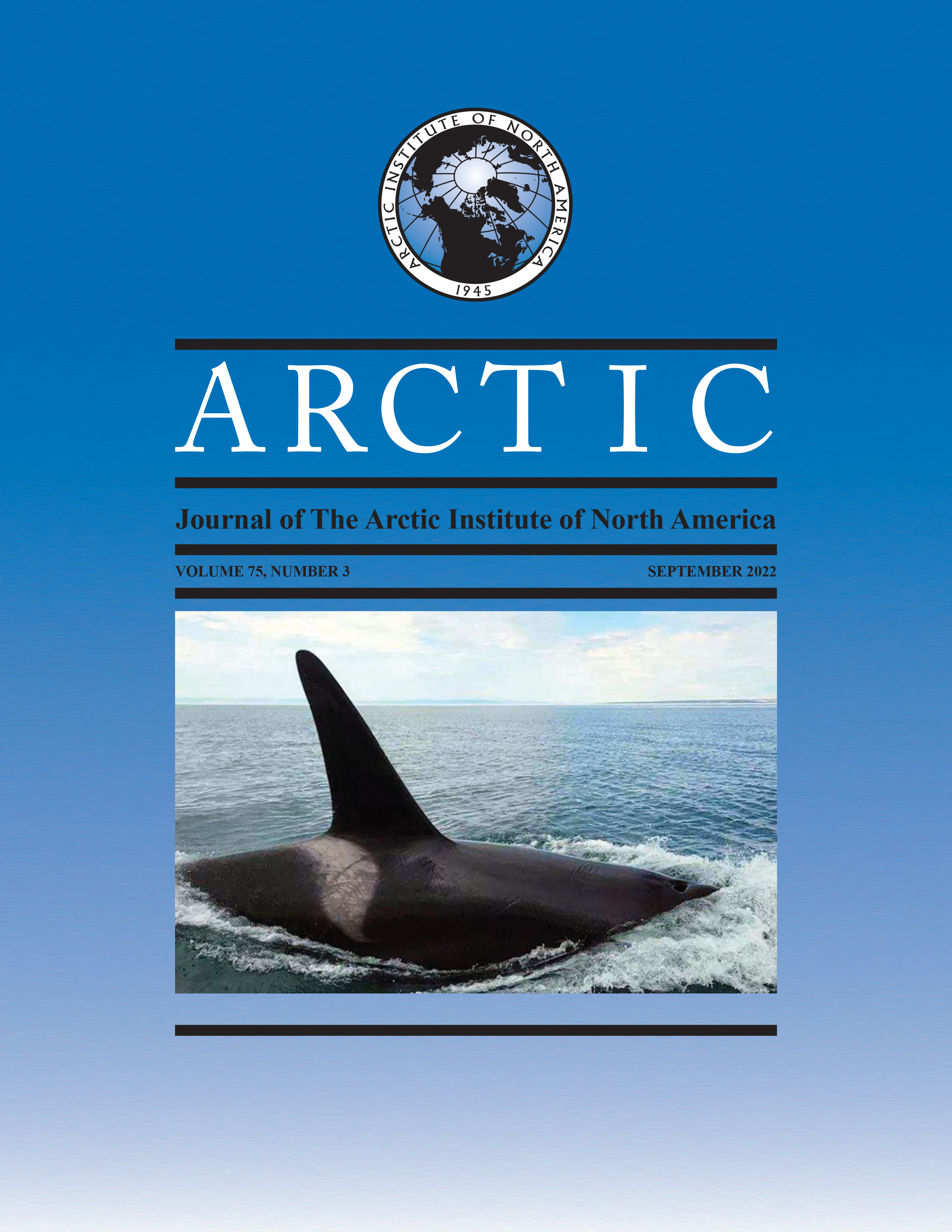Terrain Features and Architecture of Wolverine (Gulo gulo) Resting Burrows and Reproductive Dens on Arctic Tundra
DOI:
https://doi.org/10.14430/arctic75576Ключевые слова:
burrow; Gulo gulo; reproductive den; resting site; river shelf ice; snow; subnivean; wolverineАннотация
Burrowing species rely on subterranean and subnivean sites to fulfill important life-history and behavioral processes, including predator avoidance, thermoregulation, resting, and reproduction. For these species, burrow architecture can affect the quality and success of such processes, since characteristics like tunnel width and chamber depth influence access by predators, thermal insulation, and energy spent digging. Wolverines (Gulo gulo) living in Arctic tundra environments dig burrows in snow during winter for resting sites and reproductive dens, but there are few published descriptions of such burrows. We visited 114 resting burrows and describe associated architectural characteristics and non-snow structure. Additionally, we describe characteristics of 15 reproductive den sites that we visited during winter and summer. Although many resting burrows were solely excavated in snow, most incorporated terrain structures including cliffs, talus, river shelf ice, thermokarst caves, and stream cutbanks. Burrows typically consisted of a single tunnel leading to a single chamber, though some burrows had multiple entrances, branching tunnels, or both. Tunnels in resting burrows were shorter than those in reproductive dens, and resting chambers were typically located at the deepest part of the burrow. Reproductive dens were associated with snowdrift-forming terrain features such as streambeds, cutbanks on lake edges, thermokarst caves, and boulders. Understanding such characteristics of Arctic wolverine resting and reproductive structures is critical for assessing anthropogenic impacts as snowpack undergoes climate-driven shifts.
Загрузки
Опубликован
Выпуск
Раздел
Лицензия
Copyright (c) 2022 ARCTIC

Это произведение доступно по лицензии Creative Commons «Attribution» («Атрибуция») 4.0 Всемирная.


